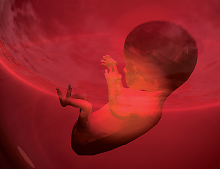High Rates of Fetal Alcohol Disorders Found in Urban Areas
Abstract
A study of patients in a Chicago clinic finds that nearly 40 percent of psychiatric patients present with a neurodevelopmental disorder due to prenatal alcohol exposure.
While the cause of many mental disorders remains mysterious, there are etiologies that can be explained, which makes it even more frustrating when prevention or intervention efforts lag. Such is the case for developmental problems brought on when pregnant women drink alcohol.

Fetal alcohol exposure is one of the leading causes of speech and language disorders, attention-deficit/hyperactivity disorder (ADHD), and learning disorders. Fetal alcohol-related developmental problems are entirely preventable, yet remain fairly common; a recent study of Midwestern first-graders published in Pediatrics estimated that between 2.4 percent and 4.8 percent of children have a fetal alcohol spectrum disorder (FASD).
In some communities, such as poor urban areas, however, where liquor stores are a ubiquitous presence, the prevalence might be even higher, though not much research has been done related to populations of these areas. A study published online last month in Psychiatric Services in Advance provides some context on how pervasive alcohol-related developmental problems are in one such urban community.
Carl Bell, M.D., a clinical professor of psychiatry and public health at the University of Illinois School of Medicine, and coauthor Radhika Chimata assessed the records of 590 adult and 21 youth psychiatric patients—who were almost all African American—who attended the Family Medicine Clinic at Jackson Park Hospital on Chicago’s Southside.
They found that 237 of the 611 patients, or nearly 40 percent, had clinical profiles consistent with a neurodevelopmental disorder associated with prenatal alcohol exposure, while only 53 patients, or 9 percent, presented with a “classical” DSM-5 neurodevelopmental disorder such as intellectual disability, ADHD, or autism; the authors disagreed on the specific type of neurodevelopmental disorder in seven additional patients.
As anticipated, many of the patients with FASD had been previously misdiagnosed with one of these disorders or with an illness such as bipolar disorder. Even Bell, who is a staff psychiatrist at the Family Medicine Clinic, admits to missing some cases. “I did not have a clue how prevalent this neurodevelopmental problem was, and I was seeing these people clinically.”
Regardless of the past, Bell believes this issue is of paramount importance moving forward. “This is the biggest public-health issue since polio,” he told Psychiatric News.
In addition to causing developmental disabilities—which were for the first time acknowledged in the new DSM-5 as neurodevelopmental disorder associated with prenatal alcohol exposure (ND-PAE)—alcohol can induce other physical and neurological problems in fetuses, including heart murmurs, facial abnormalities, and reduced size and weight. This combination of disabilities makes children with FASD frequent targets of abuse (physical, verbal, and sexual), which in turn brings on more behavioral problems and an increased risk for substance abuse.
And the problem is not going away. “We identified 237 cases of fetal alcohol disorder during our assessments, but more have come through the clinic doors since then,” Bell said. “The clinic now sees more than 400 people with this condition, and like a marching band going down a dead-end street, they just keep filling up the facility.”
“This work illuminates the troubles facing an underserved population in Chicago, but it also provides just a snapshot of the ‘iceberg’ that we find in our society as a whole,” said Susan Rich, M.D., M.P.H., a psychiatrist who specializes in fetal alcohol spectrum disorder and raising awareness about it. “Wherever we find social drinkers who on occasion binge alcohol, we will find ND-PAE.”
As an example, Rich noted that the Centers for Disease Control and Prevention has cited college-age youth as having the highest risk of ND-PAE because they are frequently sexually active while drinking at binge rates.
To tackle this problem, Rich believes that focused, preconception, prevention strategies are needed to help curb the high unplanned pregnancy rate in the U.S. She pointed out that most of the mothers interviewed in Bell’s study stopped drinking once they knew they were pregnant, so even in places with high rates of alcohol use, like disadvantaged urban areas, mothers try to protect their babies’ health once they are aware of their pregnancy.
But drinking even during those first few weeks of pregnancy can lead to a lifetime of disability for the unborn child, she noted. ■



